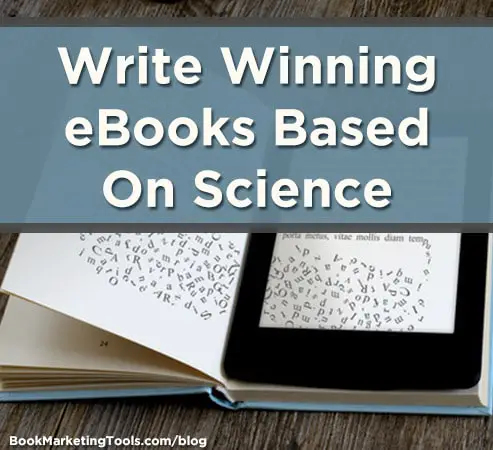Ever love a movie in the theater . . . only to be disappointed when you watch it on TV?
It’s the same with ebooks and print. They’re different media like movies and TV. Yet most of us write an ebook with print in mind – overlooking what sets them apart.
Ebooks make up 30-35% of book sales – a percentage that has been stable for several years. Amazon.com lists over 3.2 million kindle ebooks and 42.5 million print books – a constantly shifting number. Since the initial ebook boom, many people have become hybrid readers (print and screen) or returned to print completely. Why?
According to Dr. Maryanne Wolf, Director of the Center for Reading and Language Research, “We were never born to read. Human beings invented reading . . . [and thus] rearranged the very organization of our brain.”
What does that organization look like?
We use the same part of our brain that makes sense of physical landscapes to create a “mental representation” from words, sentences, and stories – a map of content.
Ferris Jabr, science journalist, explains, “text is a tangible part of the physical world we inhabit.” The brain sees letters as “physical objects.”
Digital Reading Issues
What happens when we remove the topography of reading – shift to a screen where we can’t fold down corners, feel the physical weight of pages, have easy navigation points, or touch paper? What happens when we can’t turn pages like following a trail or leaving a footprint?
A screen interferes with what Jabr calls the “intuitive navigation of text” that maps a “journey” in the mind. It’s like driving on a highway without signs or walking down a street that doesn’t end. A digital page is there and then it’s gone. There’s no clear beginning and end; only an endless flow of words on a device with tempting distractions like Facebook, email, and YouTube.
One hybrid reader describes print as an experience unto itself; a physically defined world of content where you immerse yourself in words. Ebooks are more about convenience; light-weight, adjustable, and free-floating. A lot happens between those two reading experiences.
What’s an author to do? Stop fighting the differences and embrace them.
Write for e-Reading
First consider where your work will be read. Are you writing a print book and squeezing it into digital format? Like the movie and TV, does something get lost? Numerous studies show that print books have better reading comprehension, recall, navigation, immersion, and emotional impact than ebooks. What can you do to change that if you’re writing an ebook?
A lot. Check out some techniques that enhance the “topography” of reading on a screen.
- Structure makes a page-turner. Long passages, convoluted plots, and endless chapters drain mental resources. Ebooks should have short, well-defined chapters to avoid mental and physical fatigue. Be generous with white space which eases eye fatigue common in screen reading.
- Navigation is easy in print, cumbersome in ebooks. Make it simple – use clear navigational tools like large numbers at the beginning of each chapter or section. Consider other “markers” like photos, illustrations, or images that enhance your story. Be careful – don’t use so many that they become a distraction. The goal is for the content to grab the reader not create a picture book.
- Images should enrich the story. NEVER prevent readers from visualizing your words. Avoid faces, places, or things that define the characters or expose the plot.
- Words should be chosen carefully. Short sentences alternating with long work best. Use simple, powerful descriptions that highlight color, touch, smell, and sound. Endless sentences and long, dense paragraphs encourage readers to flip to another site. Remember, your book is on a screen where your words match the fleeting motion of digital reading.
- Cliff hangers are critical. Always end a chapter or section with a cliff hanger or strong reason to read on.
- Emotional impact has been shown to decrease in screen reading. Be aware! Your plot should be tight, your characters compelling or hateful, your scenes clear. Use powerful words. Avoid clichés, an abundance of curses, or too many false-sounding euphemisms.
Be flexible. Devices and technology change constantly. Be aware of what’s going on now and what’s coming tomorrow. Write ebooks designed for the screen.
Do you want to write a print book based on the science of reading? Check out my next blog:
Dr. Jeri Fink is a Bestselling Author (ebook and print), Photographer, Social Worker, and Blogger. She has a total of 28 published books and hundreds of blogs and articles. Check out Dr. Fink’s ebooks: www.hauntedfamilytrees.com/books – Sign up for Dr. Fink’s weekly photo insights: www.hauntedfamilytrees.com/landing-page

